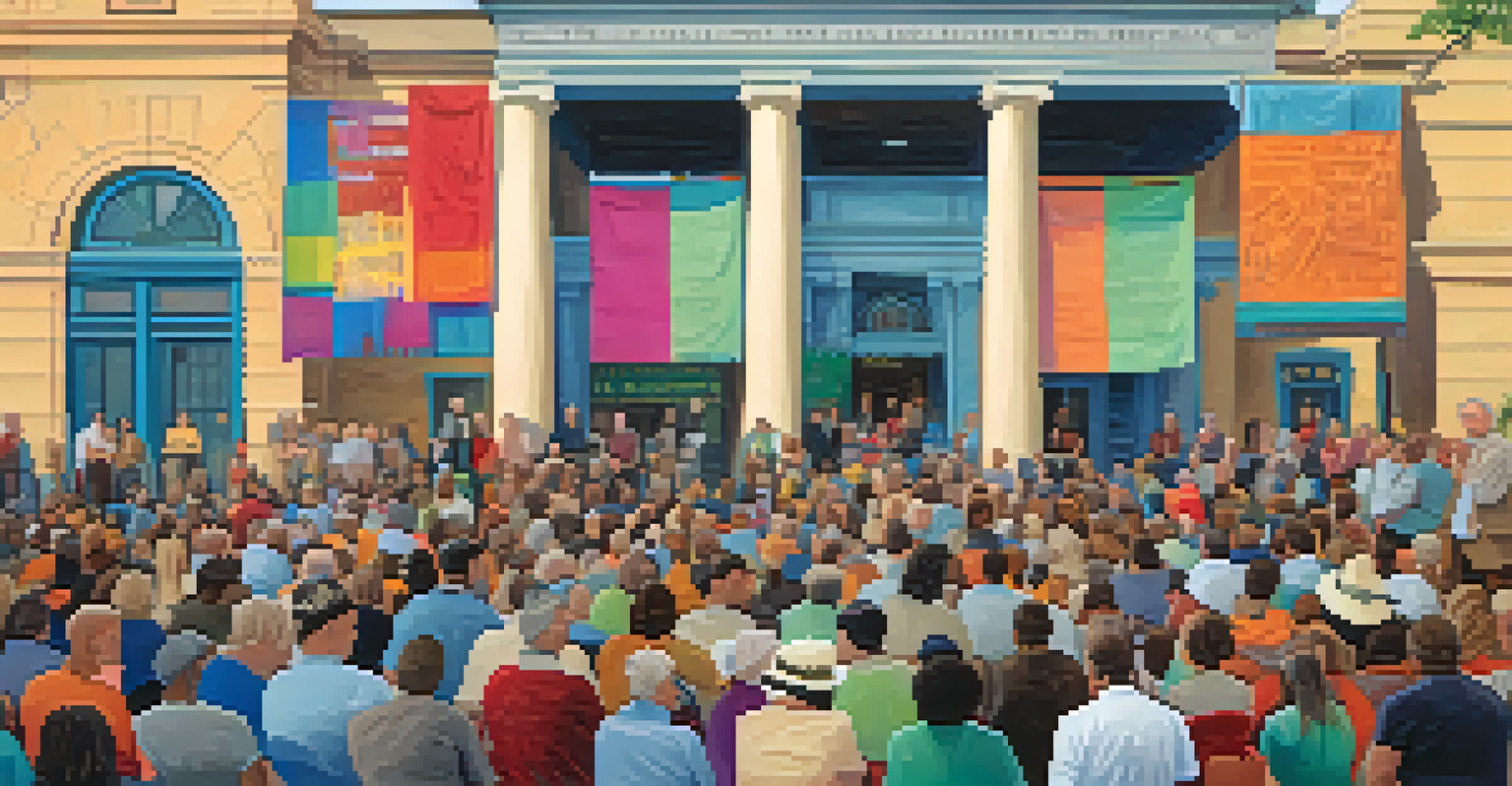The Impact of Development on Austin's Historical Sites

Austin's Unique Historical Landscape and Its Significance
Austin, known for its vibrant culture and music scene, is also steeped in history. The city is home to numerous historical sites, from the Texas State Capitol to the historic homes in the Old West. These landmarks not only attract tourists but also serve as vital reminders of Austin's past, shaping the community's identity.
Preservation is a form of empowerment and a way of recognizing the stories that shape our communities.
As development progresses, the significance of these historical sites often comes into question. Local residents cherish these locations, recognizing their role in telling the story of Austin's evolution. However, the balance between progress and preservation can sometimes get complicated.
Understanding the importance of these sites is crucial as we navigate the challenges posed by development. These locations offer a glimpse into the lives and struggles of those who shaped Austin into the city it is today. Their preservation is essential for maintaining continuity in the community’s narrative.
The Rising Tide of Urban Development in Austin
Austin has experienced a surge in urban development in recent years, driven by a booming population and a thriving economy. New high-rises, commercial spaces, and residential areas are constantly emerging. While this growth brings opportunities, it also raises concerns about the potential impact on historical sites.

With every new construction project, there’s often a debate about whether to protect existing historical landmarks or allow for modernization. This tension can lead to difficult decisions that may compromise the integrity of Austin’s historical heritage. It’s a balancing act between meeting current needs and honoring the past.
Balancing Growth and Preservation
Austin faces the challenge of urban development while striving to protect its historical sites.
This rapid development also sparks discussions about the city’s identity. As facades change and landscapes evolve, residents and historians alike ponder what it means to retain Austin's character amidst such transformation. The choices made today will shape the narrative of tomorrow.
Case Studies: Development Projects Near Historical Sites
Several recent development projects in Austin have sparked discussions about historical preservation. For instance, the redevelopment of the former Seaholm Power Plant has transformed the area into a bustling hub while preserving its iconic exterior. This project is often cited as a successful model of blending the old with the new.
History is not a burden on the memory but an illumination of the soul.
Conversely, proposals for high-rise buildings near the historic district have raised alarms among preservationists. The potential overshadowing of landmarks like the Driskill Hotel poses real risks to the historical atmosphere that makes Austin unique. These case studies illustrate the complexities involved in managing development near historical sites.
Through these examples, we can better understand the implications of development on Austin's historical fabric. They serve as reminders that while progress is essential, it should not come at the expense of a city's heritage. Finding solutions that honor both growth and history is key.
Community Response to Development Threats
As development encroaches on historical sites, the community often mobilizes to protect its heritage. Grassroots movements and local organizations play a crucial role in advocating for preservation. These groups raise awareness and rally support, ensuring that the voices of residents are heard in city planning.
Public meetings and forums become venues for passionate discussions about the future of Austin's historical sites. Residents share their personal stories and connections to these landmarks, emphasizing their importance beyond mere bricks and mortar. This collective sentiment often influences local government decisions.
Community Advocacy is Crucial
Grassroots movements play a vital role in mobilizing support for the preservation of Austin's heritage.
The community’s response to these threats highlights the significance of public engagement in preserving history. It demonstrates how a united front can make a difference in shaping the city's development trajectory. Ultimately, it’s a testament to the enduring value of Austin’s rich historical narrative.
The Role of Government in Protecting Historical Sites
Governmental policies play a pivotal role in the preservation of historical sites amid urban development. Local ordinances and zoning laws can provide essential protections for these landmarks. However, the effectiveness of these measures often depends on the political will and public support behind them.
In Austin, the Historic Preservation Office works to identify and safeguard sites of historical significance. Their efforts include designating landmarks and providing resources for restoration. Yet, they often face challenges when development pressures mount, highlighting the need for robust policies.
The interplay between government action and community advocacy is crucial in protecting Austin's historical heritage. When these forces collaborate, they can create a framework that values both progress and preservation. This synergy is vital for maintaining the city's unique character amidst ongoing change.
Innovative Approaches to Historical Preservation
In response to the challenges of development, innovative preservation strategies are emerging in Austin. Adaptive reuse is one such approach, where old buildings are repurposed for modern use while maintaining their historical essence. This not only preserves the structure but also breathes new life into the surrounding area.
Another trend is the integration of technology in preserving history. Augmented reality apps, for instance, can provide immersive experiences that educate visitors about historical sites. By marrying technology with tradition, Austin can engage a wider audience and foster greater appreciation for its heritage.
Innovative Preservation Strategies
Creative approaches, such as adaptive reuse and technology integration, are essential for maintaining Austin's historical essence amidst modern development.
These innovative methods exemplify how preservation can coexist with development. They showcase a forward-thinking attitude where history is not merely preserved but celebrated in contemporary contexts. It's an exciting time for Austin as it navigates the intersection of the past and the future.
The Future of Austin's Historical Sites Amid Development
Looking ahead, the future of Austin's historical sites will largely depend on community involvement and government action. As development continues to reshape the city, it is crucial that residents remain engaged and advocate for the preservation of their heritage. The conversations happening now will set the tone for future generations.
Balancing the need for modern infrastructure with the desire to protect historical landmarks will require innovative thinking and collaboration. Stakeholders from all sectors must come together to find solutions that honor Austin's past while accommodating its growth. This dialogue is essential for a sustainable future.

Ultimately, the path forward for Austin's historical sites is not predetermined. It hinges on the collective commitment to value history in the face of change. By fostering a culture of preservation, Austin can ensure that its rich history remains a vibrant part of its identity for years to come.